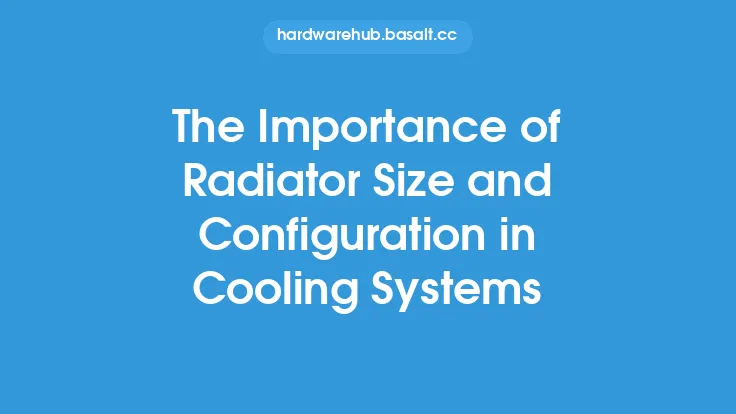When it comes to cooling systems, heat sinks play a crucial role in dissipating heat generated by electronic components, such as CPUs, GPUs, and other high-power devices. One of the most critical factors in determining the effectiveness of a heat sink is its size and surface area. In this article, we will delve into the importance of heat sink size and surface area, exploring how these factors impact the cooling performance of a heat sink and what considerations should be taken into account when selecting a heat sink for a specific application.
Introduction to Heat Sink Size and Surface Area
The size and surface area of a heat sink are directly related to its ability to dissipate heat. A larger heat sink with a greater surface area can absorb and dissipate more heat than a smaller one. This is because a larger surface area provides more space for heat to be transferred from the heat source to the surrounding air or other cooling medium. The size and shape of a heat sink also affect the flow of air or coolant around it, which can impact the convective heat transfer coefficient and overall cooling performance.
Factors Affecting Heat Sink Size and Surface Area
Several factors can influence the required size and surface area of a heat sink, including the power dissipation of the heat source, the operating temperature, and the desired cooling performance. For example, a high-power CPU or GPU may require a larger heat sink with a greater surface area to effectively dissipate the heat generated. Additionally, the type of cooling medium used, such as air or liquid, can also impact the required size and surface area of the heat sink. In general, a heat sink designed for liquid cooling can be smaller and more compact than one designed for air cooling, due to the higher thermal conductivity of liquids.
Heat Sink Geometry and Surface Area
The geometry of a heat sink, including the shape and size of its fins, base, and other features, can significantly impact its surface area and cooling performance. For example, a heat sink with a larger number of fins or a more complex fin geometry can provide a greater surface area for heat transfer, but may also increase the pressure drop and reduce the flow rate of the cooling medium. The surface roughness and finish of the heat sink can also affect its cooling performance, with a smoother surface typically resulting in better heat transfer.
Thermal Resistance and Heat Sink Size
Thermal resistance is a critical parameter in evaluating the cooling performance of a heat sink. It is defined as the temperature difference between the heat source and the surrounding air or cooling medium, divided by the power dissipation of the heat source. A smaller thermal resistance indicates better cooling performance. The size and surface area of a heat sink can significantly impact its thermal resistance, with larger heat sinks typically having lower thermal resistance. However, the relationship between heat sink size and thermal resistance is not always linear, and other factors such as the heat sink material, fin geometry, and cooling medium can also play a significant role.
Optimizing Heat Sink Size and Surface Area
Optimizing the size and surface area of a heat sink requires careful consideration of the specific application and cooling requirements. This may involve using computational fluid dynamics (CFD) or other simulation tools to model the heat sink and cooling system, and predict the cooling performance under various operating conditions. Additionally, experimental testing and measurement of the heat sink's cooling performance can provide valuable insights and help to validate the design. In general, a larger heat sink with a greater surface area will provide better cooling performance, but may also increase the cost, weight, and complexity of the cooling system.
Conclusion
In conclusion, the size and surface area of a heat sink are critical factors in determining its cooling performance and effectiveness. A larger heat sink with a greater surface area can provide better cooling performance, but may also increase the cost and complexity of the cooling system. By carefully considering the specific application and cooling requirements, and using simulation tools and experimental testing to optimize the heat sink design, it is possible to achieve optimal cooling performance and ensure reliable operation of electronic components. Whether you are designing a cooling system for a high-power CPU or GPU, or simply looking to improve the cooling performance of an existing system, understanding the importance of heat sink size and surface area is essential for achieving optimal results.





